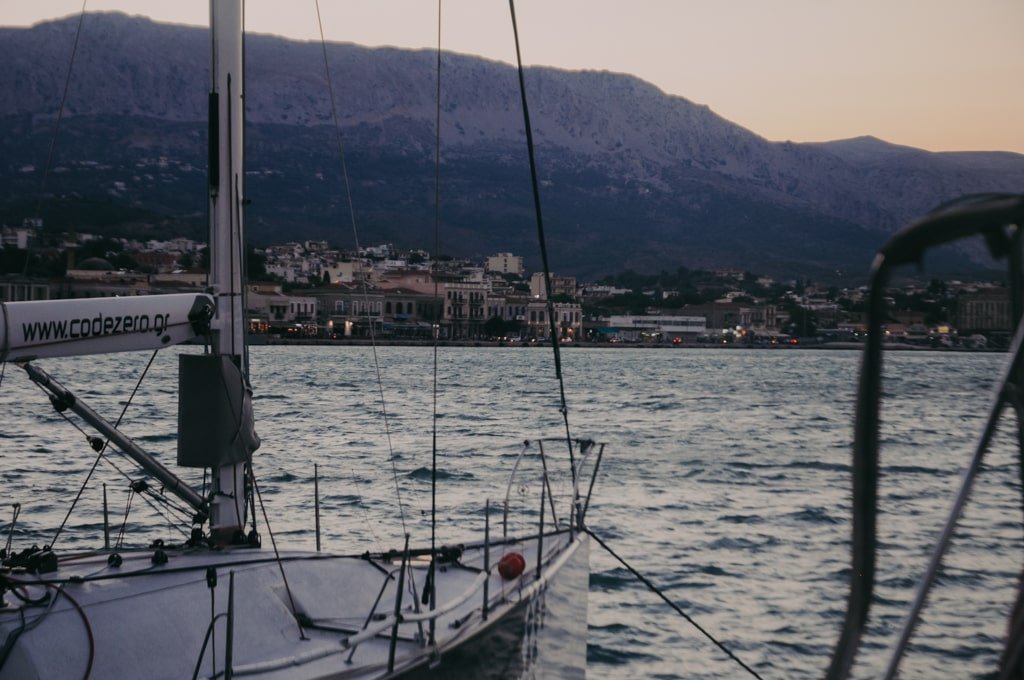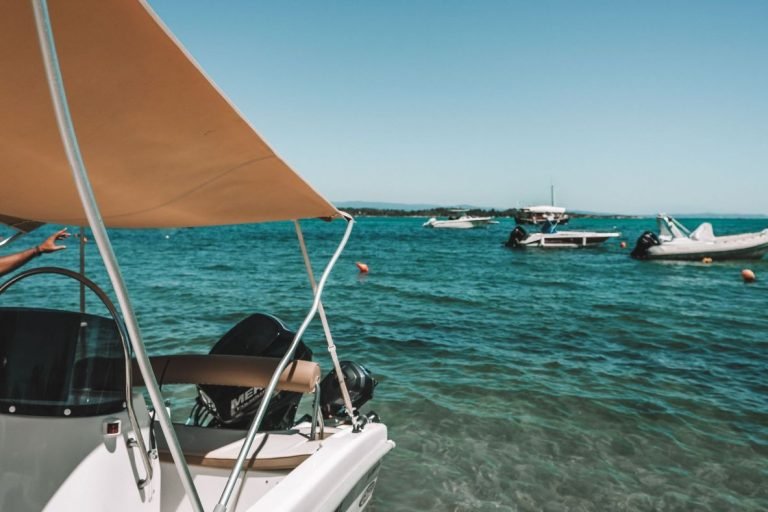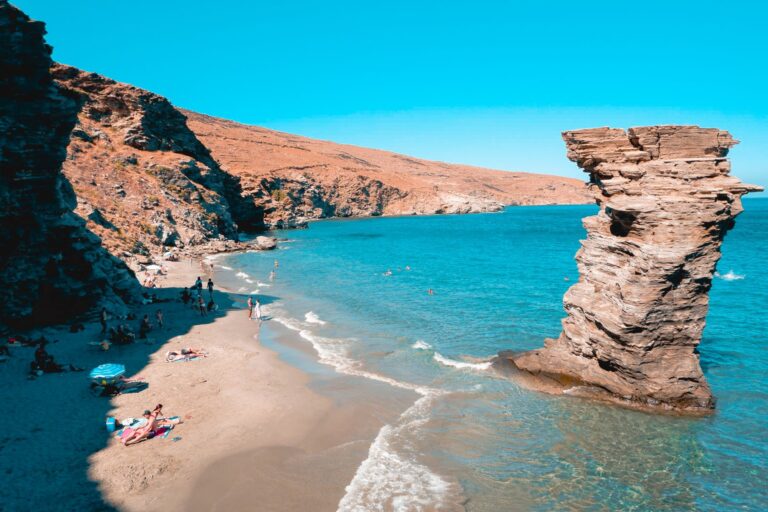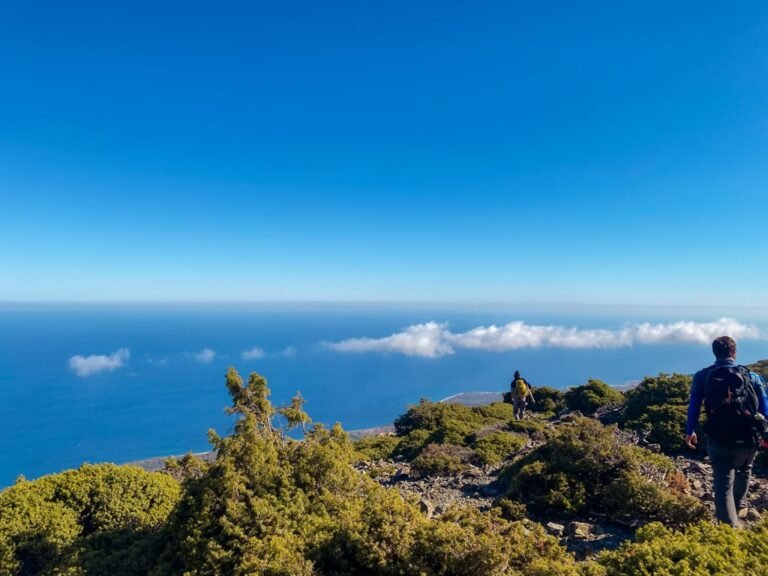This article may contain affiliate links. When you purchase something we recommend, we make a small commission. You don’t pay anything extra. 💘 For more details, check out our Terms of Use page.
Is there anything better than sailing the Greek islands?
Well… unless you get severe motion sickness, hate summer, or have a general dislike for the water (in which case, why are you even here?), probably not.
Sailing around Greece is one of the best ways to explore the country. And this comes from someone who has spent months on end — for both work and pleasure — hopping between some of the most beautiful locations in Greece. Seeing it from the water is just a completely different experience.
Table of Contents
ToggleHow to Get There
If you’re joining a charter, your starting point will likely be Athens (Alimos Marina) or one of the major island hubs like Mykonos, Paros, or Rhodes. Most people fly into Athens and connect by ferry or domestic flight to their departure island.
One thing to keep in mind: arrive at least a day early. Boats run on a strict schedule, and they won’t wait if your flight is delayed. Plus, it gives you time to shop for last-minute supplies or just get over the jet lag.
Our charter departed from Lefkada — an island on the west coast of Greece (the one facing Italy) — for a seven-day cruise around the Ionian.
For international readers (and visitors) I say come even earlier and stay around Athens. There is so much to do!
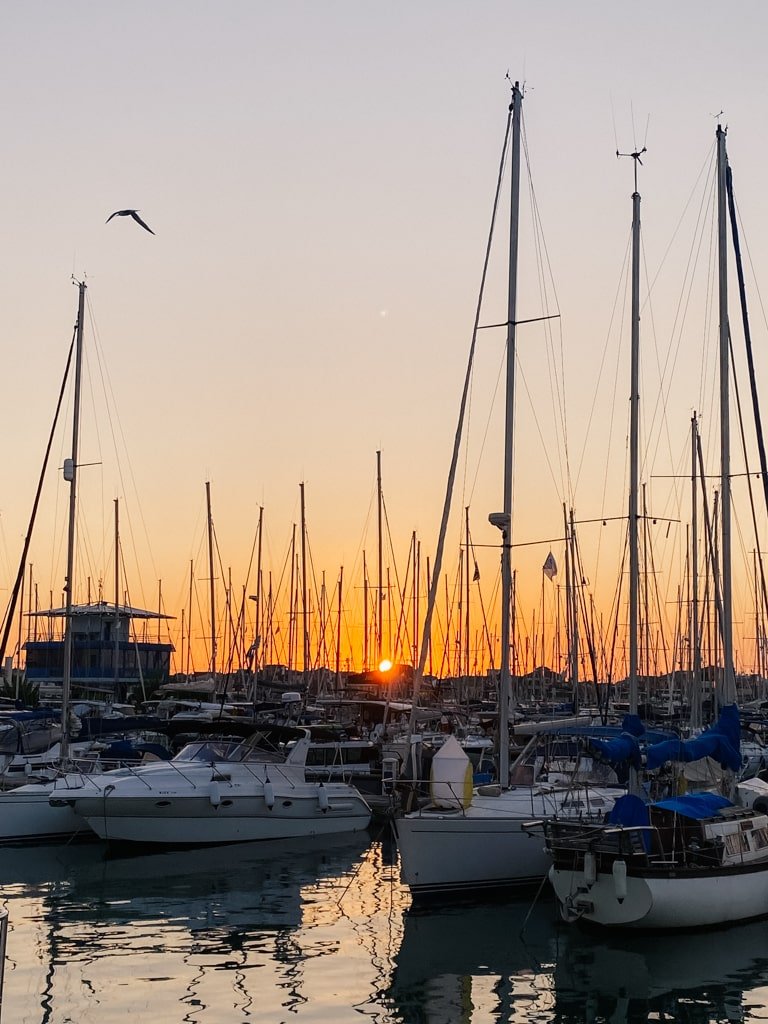
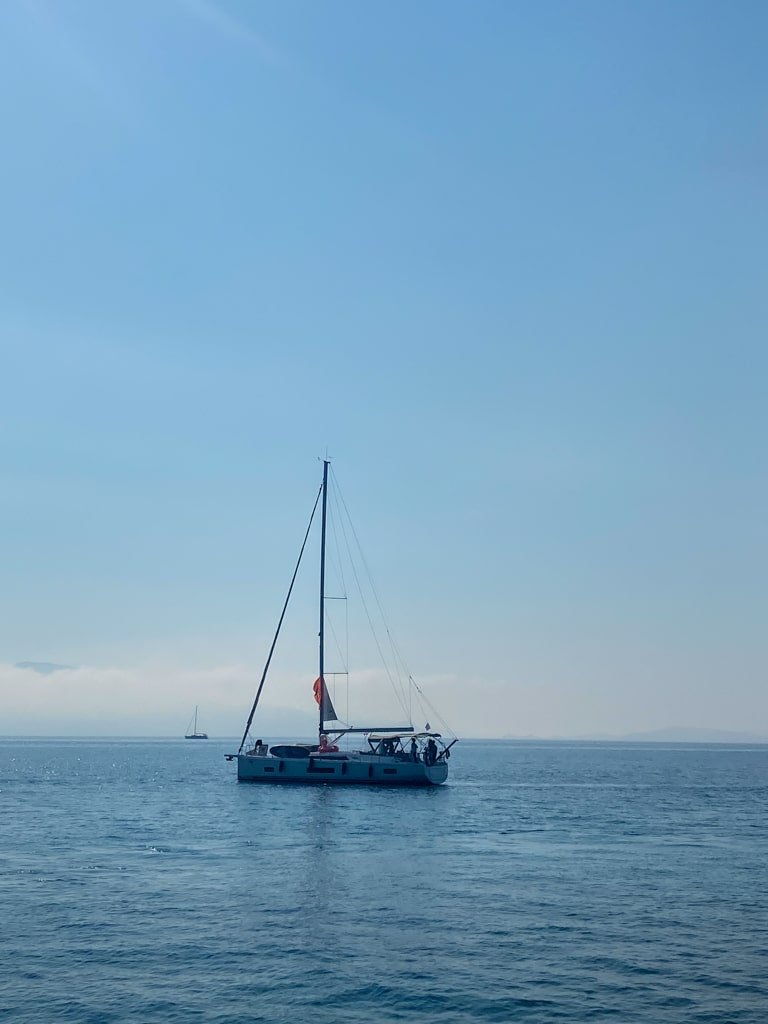
Where to Go Sailing
Here, opinions differ, so here’s mine without pretending to be an expert: anywhere that sounds good to you! Yep, that’s it.
There are a few things to consider, though:
- The Aegean is windier thanks to the meltemi winds. Book a charter earlier in the season here to avoid that (but the water will be colder)
- The Ionian has calmer seas and that picture-perfect turquoise blue-green water.
- The Sporades less known and more locals.
One more thing to note is whether you have a skipper or not.
For our trip, we had a big group (11 people) and six of them had skipper licenses. I’ve since gotten my own sailing license (so hopefully next trip I can understand more of what’s going on and actually help out).
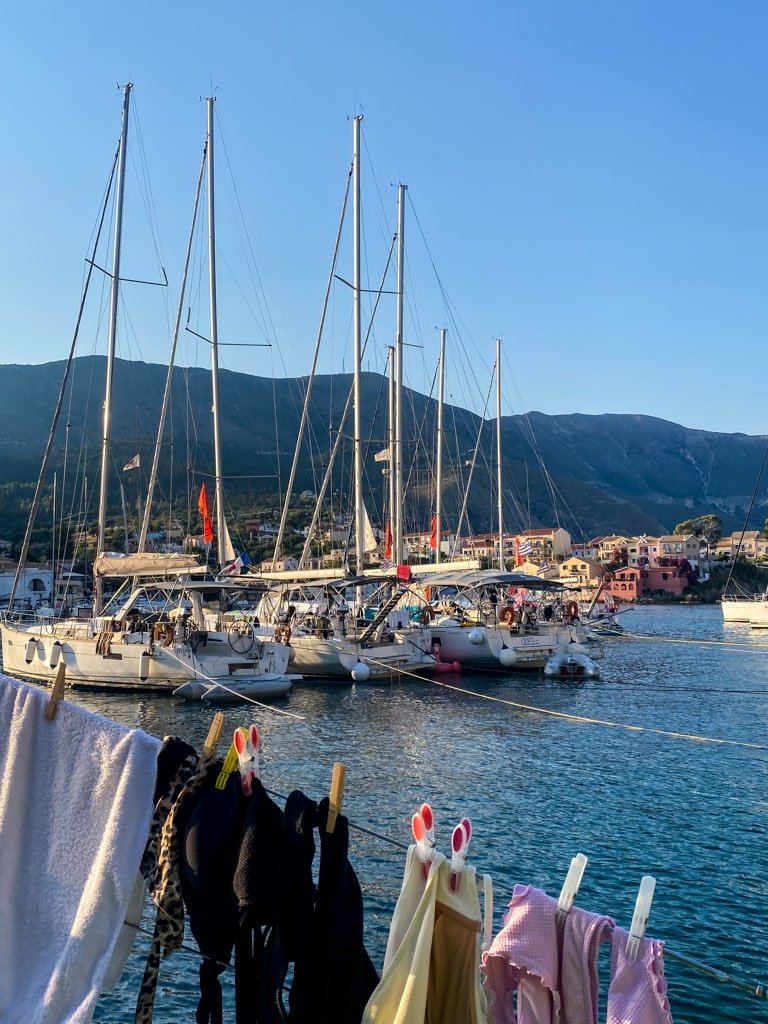
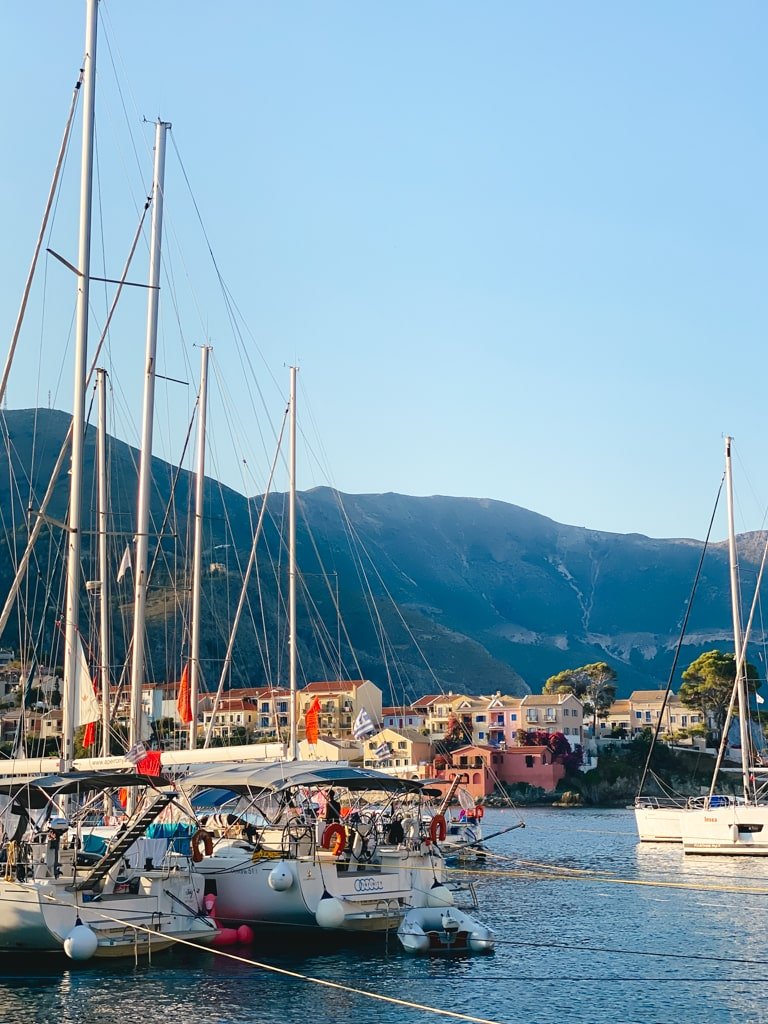
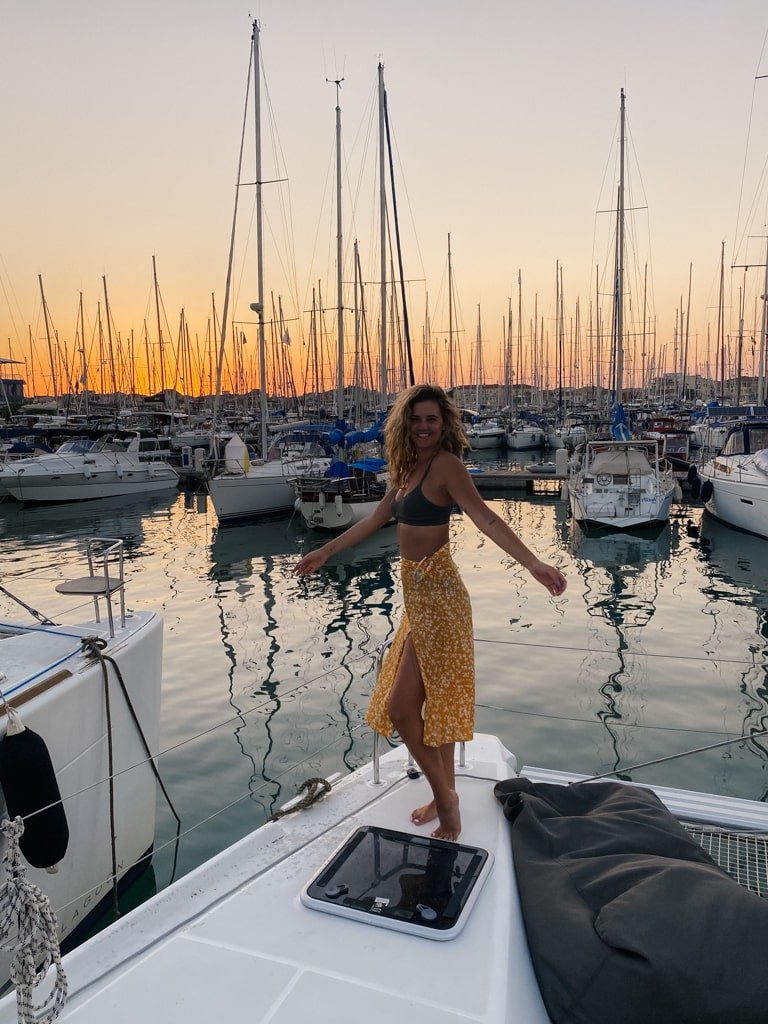
What Vessel to Choose
Again, as a non-technical person, I can only advise from experience:
- For large groups: catamaran — more stability, more space.
- For couples or two-couple trips: monohull sailing boat — cozier and easier to handle without a skipper.
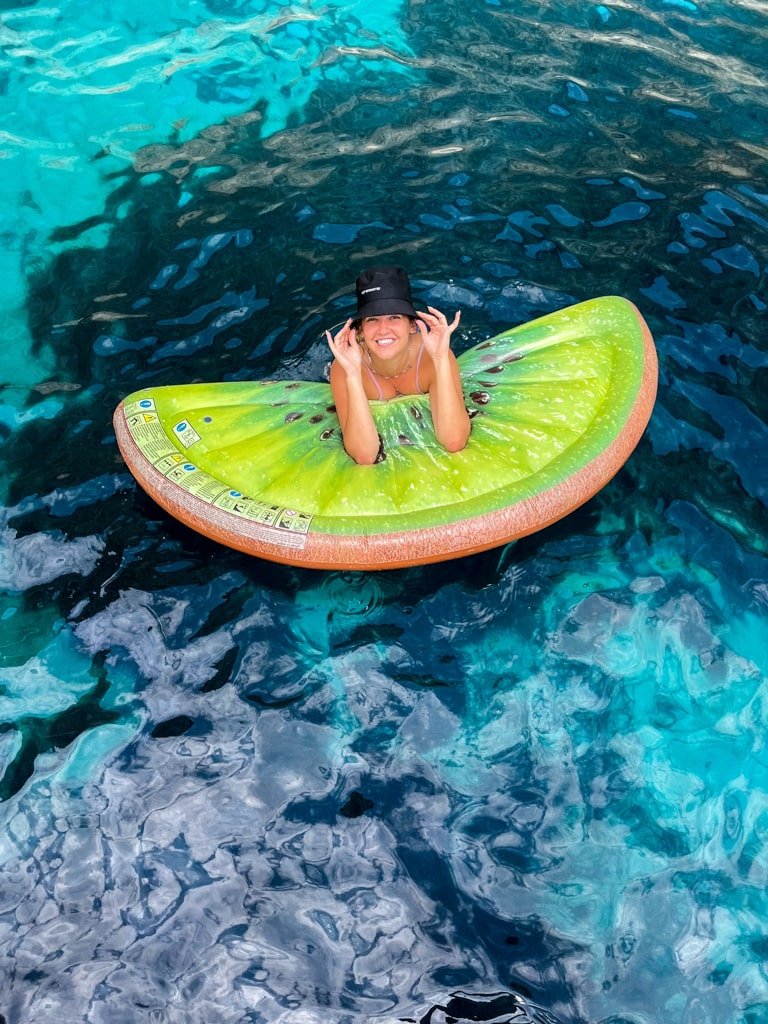
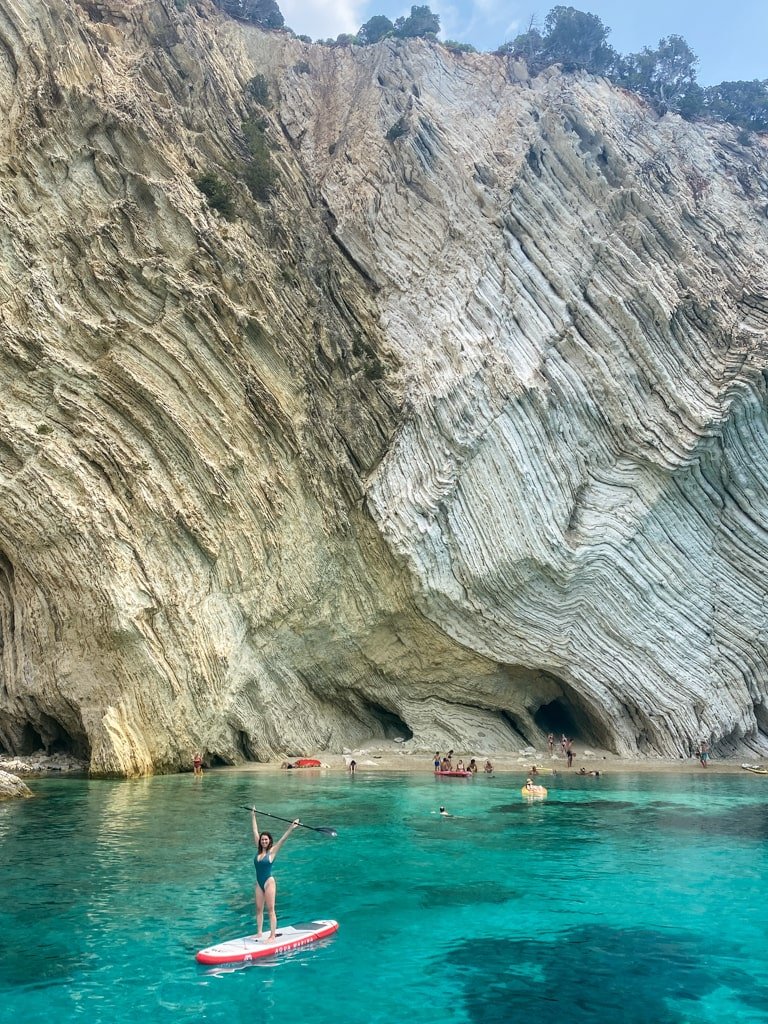
Which Backpack to Bring
Space is tight on a sailing holiday, so you want a soft-sided bag — no hard-shell suitcases. They’re bulky, don’t fit in cabins, and honestly… it’s just not cool.
If you’re flying in, this means you’ll probably want to stick to carry-on only.
I was never a superfan of any luggage brand growing up, but my favorite purchase in the last five years has been my BEIS Carry-On Weekender Bag in black. It’s the perfect size — structured but soft, with pockets, a laptop sleeve, and a removable shoe compartment that doubles as a storage box. If you’re in the market for a new bag, I can’t recommend it enough.
There are a lot of dupes on Amazon (some have amazing reviews like this one) but overall I would splurge the $120 and get the real deal. The material is soft and perfect and even the laptop case alone is amazing.
Update: I believe the BEIS laptop case with the Weekender bag was a limited edition add on. Will have to confirm if it’s still available to order.

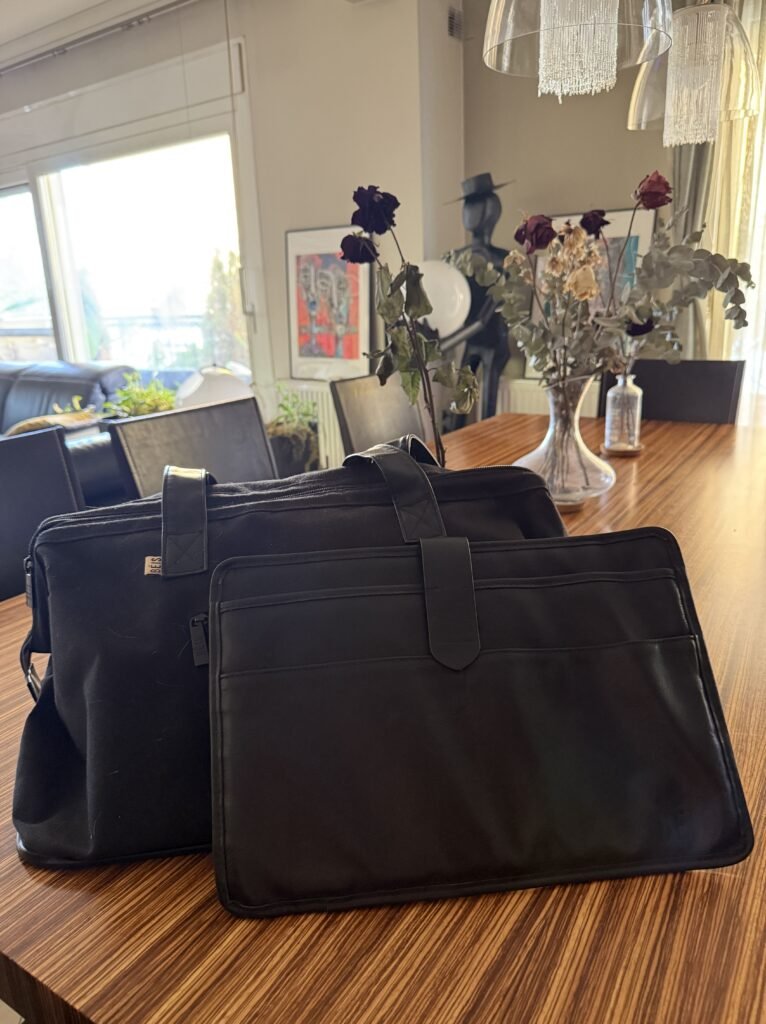
My usual set up with a carry on bag (Delsey) and the Weekender. Look at how small and compact it is (almost the same size as the laptop bag, but it fits so much). Also the trusty tote bag that comes in handy.
I also have a referral code for $20 OFF your first order if you use my link below.
Clothing Items
The good news is you don’t need a lot of clothes when you spend most of your time on the boat. My sweet spot:
- 2–3 swimsuits
- 1–2 pairs of shorts
- 1–2 skirts
- 5 light casual tops (that double as pyjamas)
- 1 warmer layer (hoodie or fleece)
- 2 pairs of shoes (sandals and closed boat shoes — I love Birkenstock EVA sandals for casual wear)
- 1 nicer outfit or dress for dinners ashore
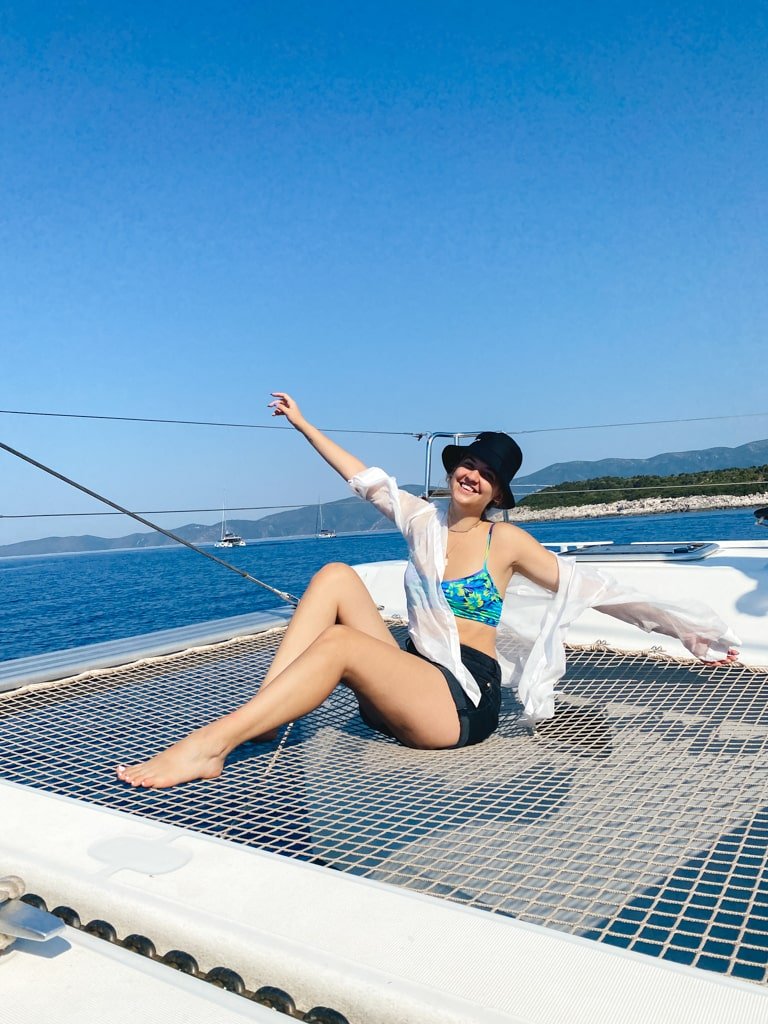
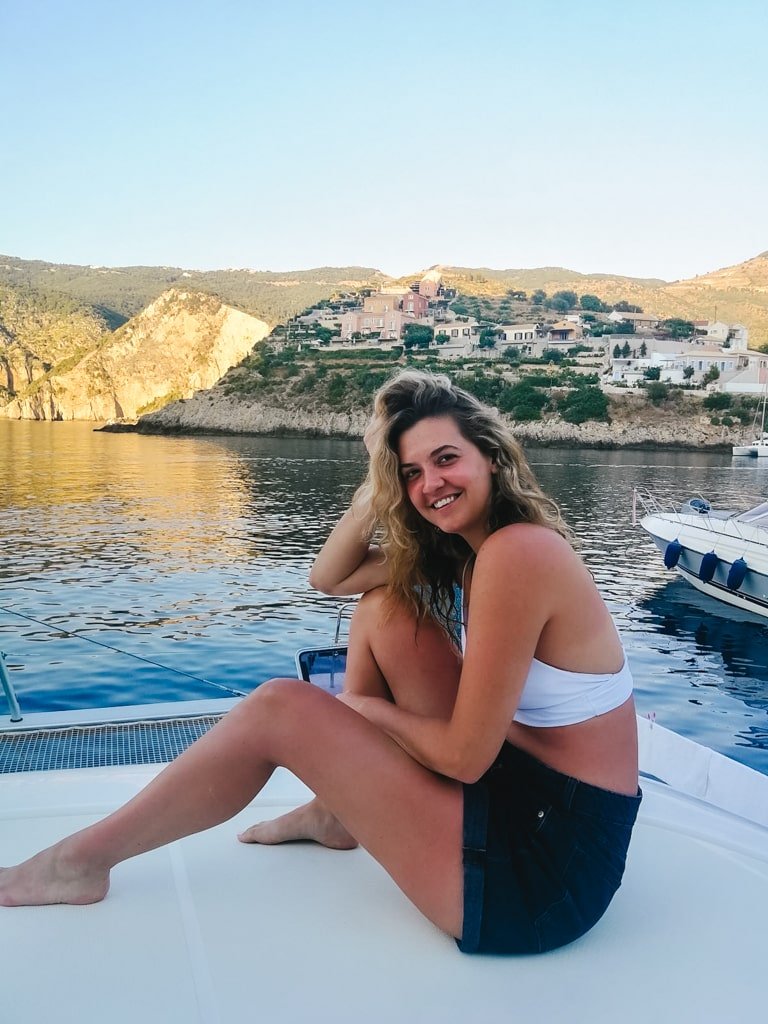
After sun care is always needed, even when you have olive skin and you think “you don’t burn”.
Additional Items
- 2–3 pairs of sunglasses (cheap ones for wearing in the water)
- Quick-dry towel (small)
- Hat (or hats)
- Shawl or sarong (doubles as a skirt or cover-up)
- Cotton tote bag (becomes your laundry bag eventually)
- Mesh bag
- Dry bag
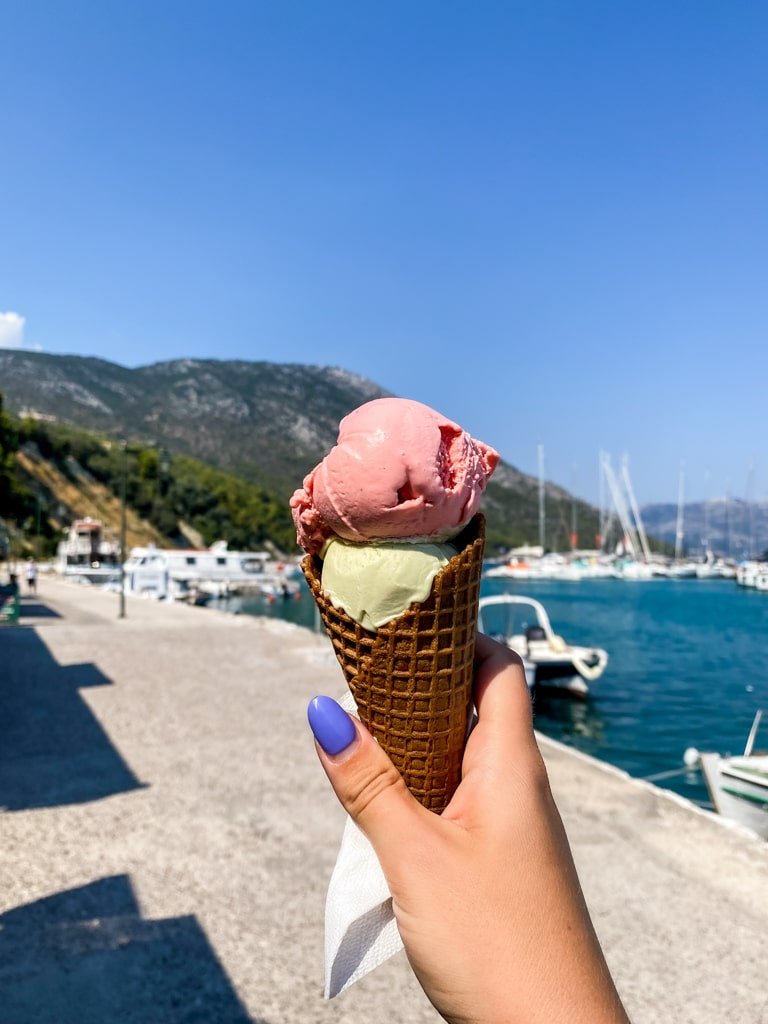
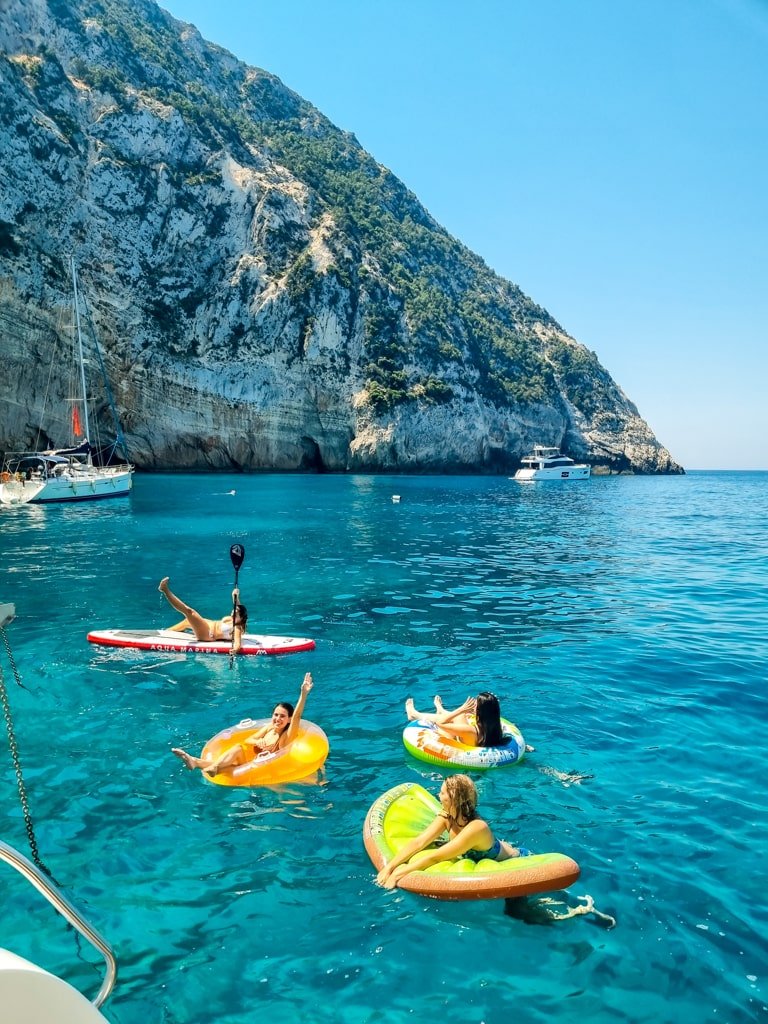
Toiletries
This depends on your style, but don’t forget:
- Sunscreen
- Lip balm (I use Lucas Papaw Ointment)
- After-sun care
- Small detangling brush
I like keeping two separate pouches:
- Go-to beach bag pouch: brush, lip balm, sunscreen, hair ties, small accessories
- Bathroom pouch: toothbrush, toothpaste, floss, other toiletries
Tech Stuff
It depends on whether your trip is pure leisure or partly work, but I recommend:
- Portable power bank (the one thing you’ll use most)
- Chargers and adapters
- Kindle Paperwhite for reading
I didn’t bring my laptop on this trip — even as a workaholic — and I wouldn’t have touched it anyway.
When it comes to electronics I have two go to companies, I am an Apple and Anker kind of gal.
My favorite Anker products that I’ve been using and have bought twice (power bank died after 3 years) are this power bank and the classic charger cables here.
A sailing holiday around the Greek islands is one of the most freeing, beautiful ways to travel. Pack light, bring only what you need, and leave room for the experiences that will fill your days — and your memories — long after you’re back on shore.
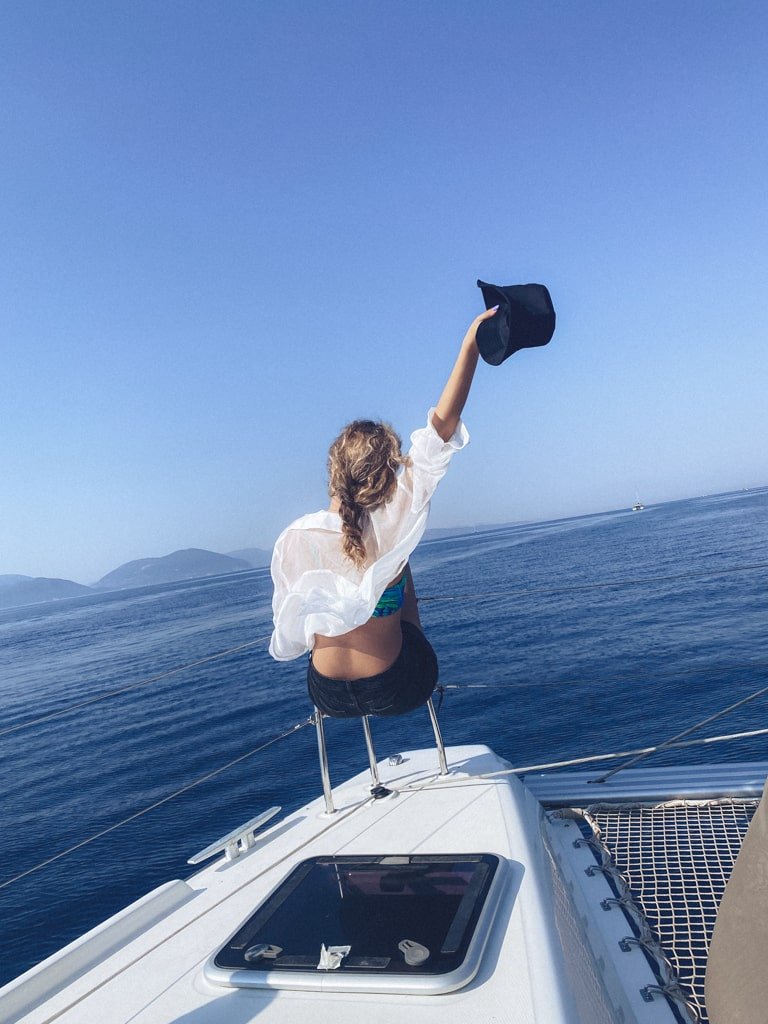
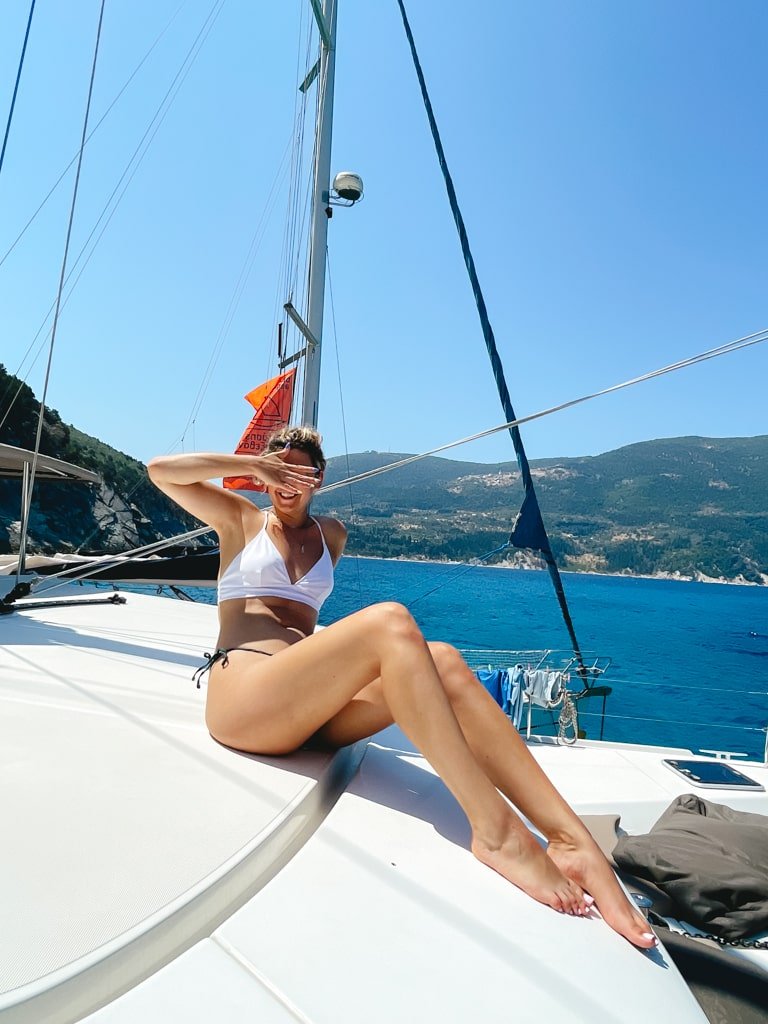
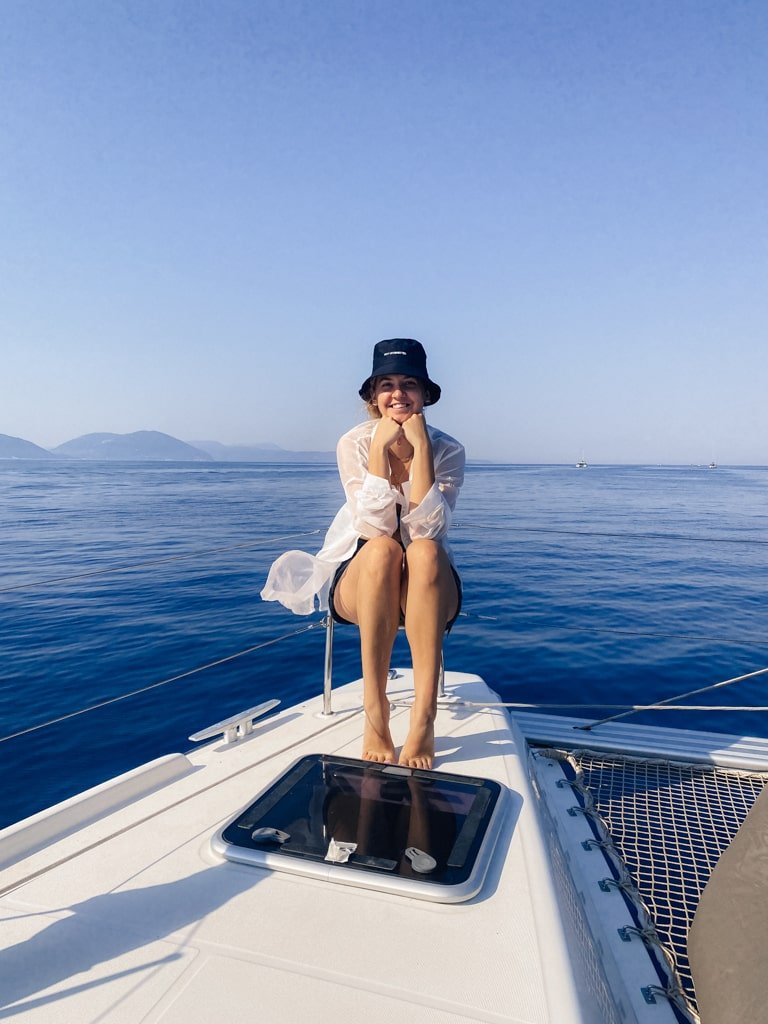
No need for lots of outfits on the boat as you can see!
What Not to Pack
There’s packing light… and then there’s packing smart. Here’s what you can happily leave at home:
- Hard-shell suitcases – They don’t fit in cabin storage and take up precious space.
- High heels – You’ll be barefoot on the boat most of the time, and heels don’t mix with wooden decks.
- Bulky beach towels – They take forever to dry; a quick-dry travel towel is all you need.
- Too many clothes – You’ll wear less than you think.
- Excess tech gear – Outlets are limited and the salt air isn’t kind to electronics.
- Full-size toiletries – Travel sizes save space and weight.
- Heavy books – Go digital with a Kindle or tablet.
ESSENTIAL INFORMATION
Must Know When Visiting Greece
- Emergency: Dial 112 for all emergencies. For police, dial 100. For ambulance 166. For fire dial 199.
- Language: English is widely spoken in most tourist areas. Common phrases to learn are “Kalimera” (Good morning), “Yia” (Hello and Bye – informal), and “Efharisto” (Thank you).
- Water: Tap water is safe in Athens, mainland Greece and a small number of islands. Always ask beforehand.
- Driving: Right-hand side, international driving permit recommended. Book your rental car with Discover Cars for the best rates and comparisons across all major and local companies.
- Accommodation: Booking.com for the most options on hotels, apartments and hostels. Free cancellation in a lot of places and no need to pre-pay. Great for their rewards points system.
- Islands: There are a lot of islands, spread out around the country. Start with a map or ferry service to get an idea of travel times. Ferry Scanner is the best for ferry bookings to the Greek islands.
- Activities: From cultural sights to day trips, food tours and city guides, use Get Your Guide.
- Public Transport: For Athens, use the Athens Metro. If you are not renting a car, use Trains (Hellenic Train) or KTEL (Public Buses) services.
- Domestic Airlines: The main airlines for air travel are Aegean Airlines and Sky Express. I recommend Aegean Airlines and its rewards program.
- Taxi: Always use a taxi app, instead of flagging down a taxi from the road. Use FREE Now (formerly BEAT).
- Culture: A siesta nap is still common in less touristy areas. This also means businesses will close between 2 PM – 5 PM. Except for hospitality businesses, everything is closed on Sundays.

